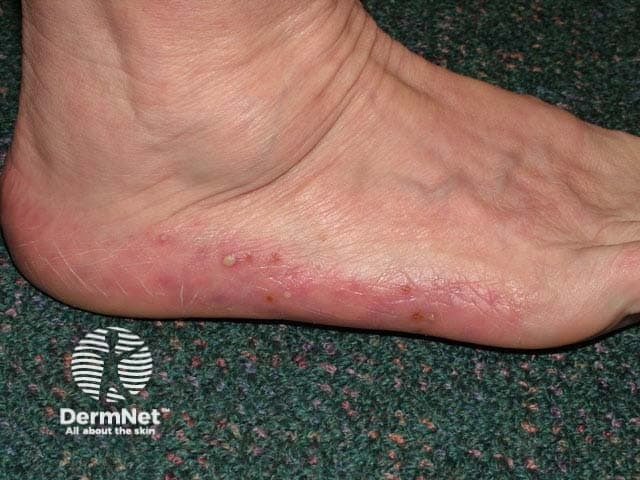Main menu
Common skin conditions

NEWS
Join DermNet PRO
Read more
Quick links
Blistering conditions affecting the feet – 12 cases
This quiz tests your diagnostic skills for blistering conditions affecting the feet.
Blisters are relatively common findings on one or both feet. They are formed by intraepidermal or subepidermal cellular separation. This may arise because of mechanical injury, infection, or immunological reaction to exogenous or autogenous factors. The blisters may be filled with clear or haemorrhagic fluid or pus.
For each of the ten cases, study the image(s) and then answer the questions. You can click on the image to view a larger version if required.
Each case should take approximately 2 minutes to complete. There is a list of suggested further reading material at the end of the quiz.
When you finish the quiz, you can download a certificate.
Case 6


What is the cause of the blistering?
Palmo-plantar pustulosis
Describe the clinical features of this condition.
Chronic sterile pustules within a well demarcated erythematous plaque in the instep or central sole, side of foot or heel, are characteristic of localised pustular psoriasis. It is often called plantar pustulosis in patients that have no evidence for psoriasis elsewhere, and can also affect the palms (palmar pustulosis). It is strongly associated with smoking. At times plantar pustulosis can be difficult to distinguish from, or may coexist with, pompholyx.
